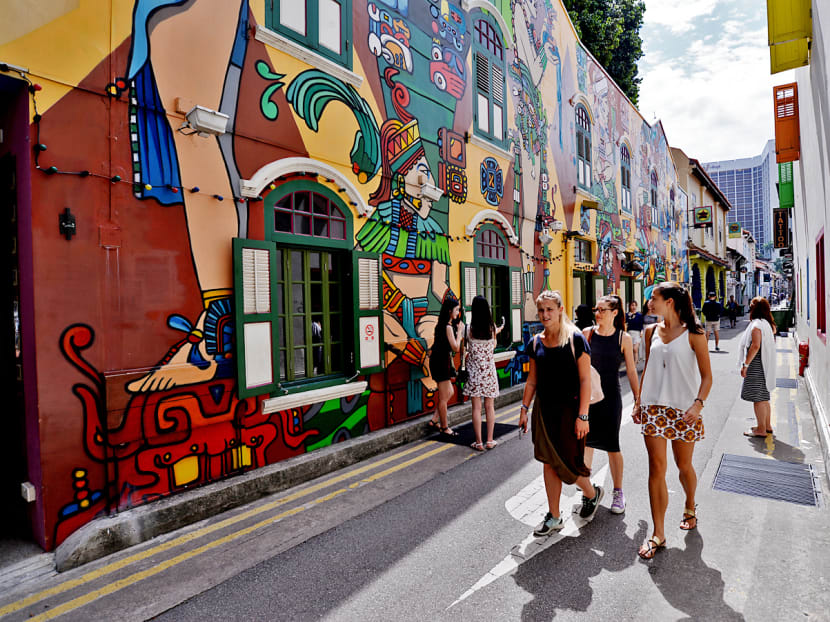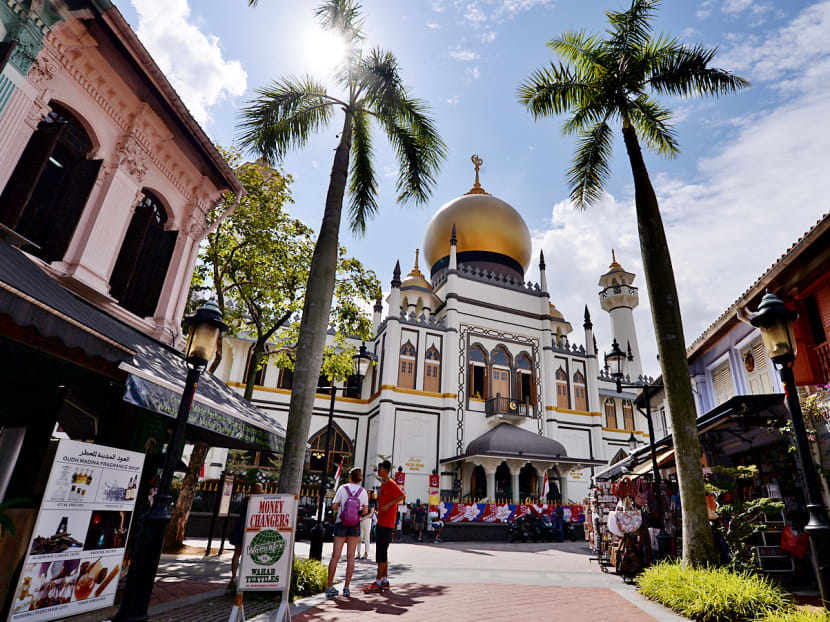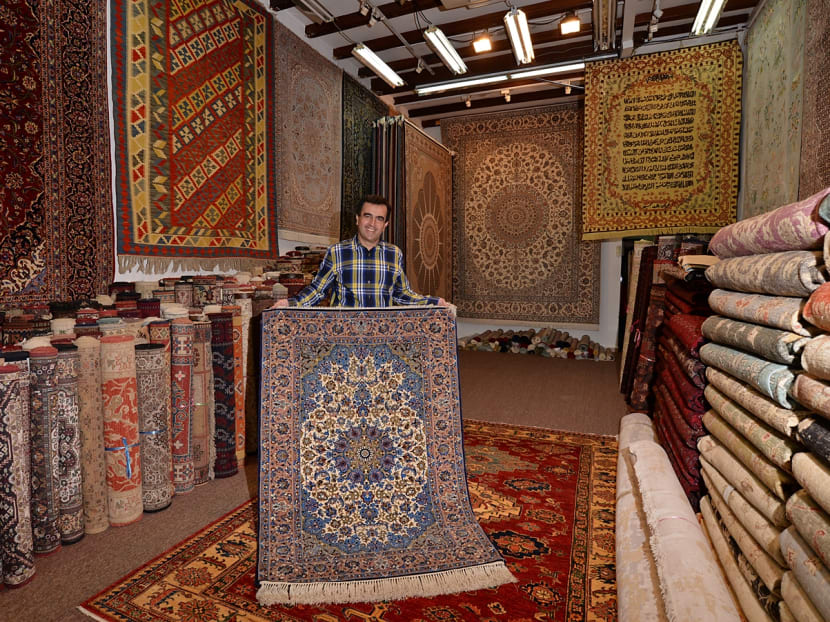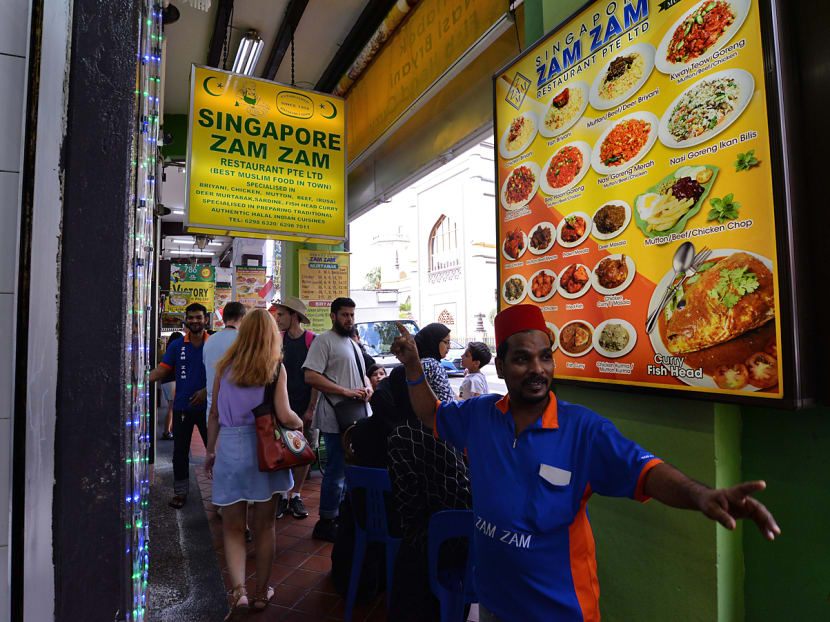National Day Special 2016: From fishing village to hipster hangout
SINGAPORE — With the gleaming gold dome of Sultan Mosque peeking over the red-clay roofs, and its rich Malay history, it is easy to simply think of Kampong Glam as a Malay enclave.




SINGAPORE — With the gleaming gold dome of Sultan Mosque peeking over the red-clay roofs, and its rich Malay history, it is easy to simply think of Kampong Glam as a Malay enclave.
But long before Singapore began to think of itself as cultural melting pot — indeed, even before “Singapore” existed as a nation — Kampong Glam was a stomping ground for people of all ethnicities.
In colonial days, the Arabs, Indians, Javanese, and Chinese thronged the area, proving that multiculturalism does not belong exclusively to modern Singapore. Named after the cajeput tree, called “gelam” in Malay, the area was established in the early 1800s as a royal settlement for Sultan Hussein and his family.
With the arrival of immigrants from different ethnic groups — bringing with them goods to be traded — free trade policies and a well-placed port heralded an age of trading in Kampong Glam.
This rich culture remains apparent today. Take a walk towards Sultan Mosque up Bussorah Street, and waiters from Middle Eastern eateries beckon you over for a meal.
On North Bridge Road, eateries serving traditional Indian cuisine line the streets. Turn onto Haji Lane, and a crop of fashionable cafes and bars appear. Now a magnet for locals and tourists alike, it once also drew travellers of a different sort — immigrants who lived in cramped conditions while working in Kampong Glam as they saved up for a Haj pilgrimage to Jeddah, giving the street its name.
Said Malay Heritage Centre curator, Ms Suhaili Osman: “We have to disabuse people of the notion that (previously) this was an idyllic place of fisherman, wooden huts. As you look at the modern businesses in Haji Lane, the hipster ones, the restaurants, the fashion boutiques, back in the day, that what was going on here, albeit repurposed.”
Even after the Jackson Plan of 1822 — a town plan drawn up at the instruction of Sir Stamford Raffles that sought to physically segregate the different ethnic groups into enclaves — mingling among the races continued.
Arab Street was referred to as Java Street by the Chinese and Malays due to its large Javanese population, while the Indians called it Flower Street for the Javanese-owned flower shops.
“Even when you look at the street names there are different versions and they tell a story. Conservation has helped to keep the narrative for us, the narrative of a royal port town, to that of the merchants of different streets and speciality trades,” said Ms Loy Ju-Lin, senior architect with Urban Redevelopment Authority (URA).
KEEPING THE SPIRIT ALIVE
Kampong Glam was gazetted as a conservation area in 1989, and buildings within the area must meet strict conservation guidelines, such as retaining and restoring the entire exterior of a building.
But while conserving the shophouses and urban form of Kampong Glam is the first step in providing a setting for the people, it is the people who shape the tone and character of the area, said Ms Loy.
“If you position this as a more laidback neighbourhood, then naturally the kind of users attracted to this place are along the same character as well. (For) example, Haji Lane, it evolved organically, but because the trendy shops coming in are successful, it feeds upon itself,” she said.
The authorities set guidelines on the types of businesses allowed in various zones, but the businesses themselves also choose the area because their business fits the character of the area, she added.
For example, Kampong Glam is a draw for those seeking to unwind, and from the family-friendly craft cafes to live music in bars, the area has something different for everyone. This in fact dates back to colonial times, when live performances and arts centres were already a mainstay in Kampong Glam.
“Bangsawan”, a traditional Malay theatre performance, was popular back in the early 1900s, and even performed stories like Hamlet and folk tales from One Thousand and One Nights. Publication houses filled many shophouses — The Sultan, now a boutique hotel, used to house Al-Ahmadiah Press, which published the popular magazines of the day.
Arab Street remains well known for textiles, but joining such shops are scores of boutiques selling indie label clothing and accessories.
Mr Saied Labbafi, chairman of the local merchants association, who migrated from Iran to Singapore 23 years ago, moved his business from the Orchard area to Kampong Glam 13 years ago. The area felt familiar to him, with its “bazaar-like” environment. “Not as strict, or regulated compared to a mall, which has set operating hours,” he said.
Indeed, besides multiculturalism, Kampong Glam, he felt, has also retained something else from its storied past — the “kampung spirit”.
Once a year, the old-timers of Arab Street, many of them textile merchants, will gather for a communal lunch on the second day of the Eid celebrations in one of the many shophouses lining the area’s streets.
The open layout of the shopfronts has helped in retaining the kampung spirit of the area, Mr Labbafi said. “Every neighbour knows one another, takes care of one another, shares meals, borrows things. It’s like a family environment, you don’t feel like you come to work strictly to work,” he said.
Amid today’s rapid pace of life, the 48-year-old felt that people would, in time, come to appreciate the charms of the area.
“It’s like a gold mine to me. When you are young, you don’t see the value of gold but as you grow older and start to think more about the place, then you will see the beauty, the gold, of Kampong Glam,” he said.






